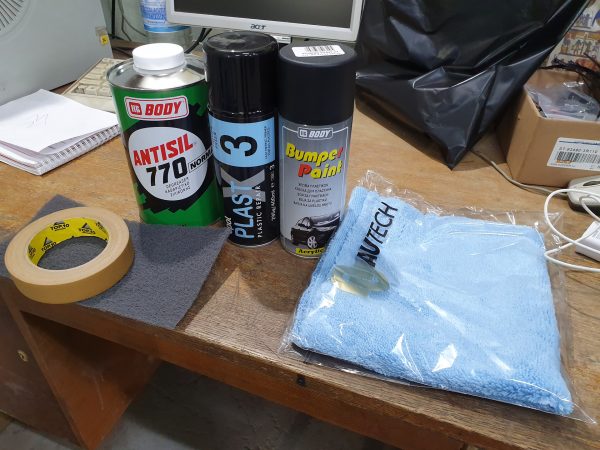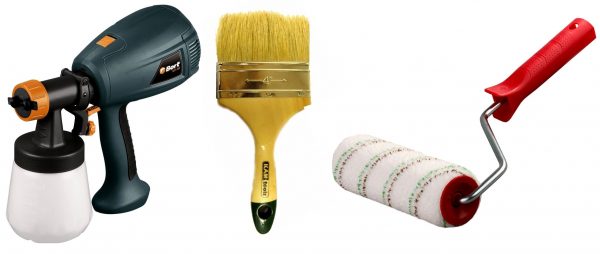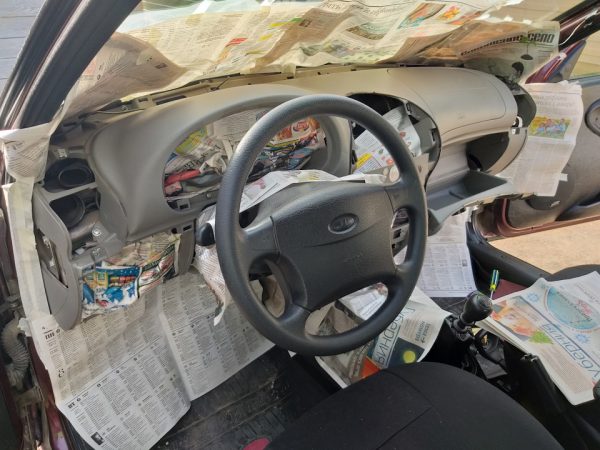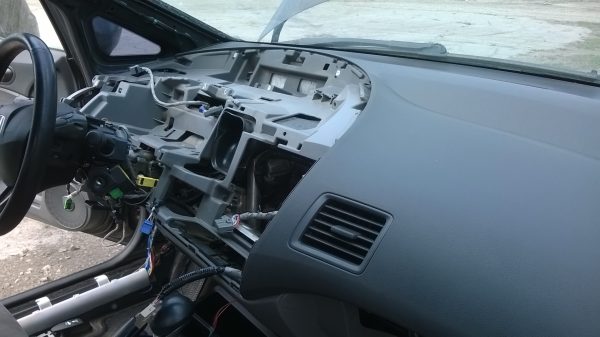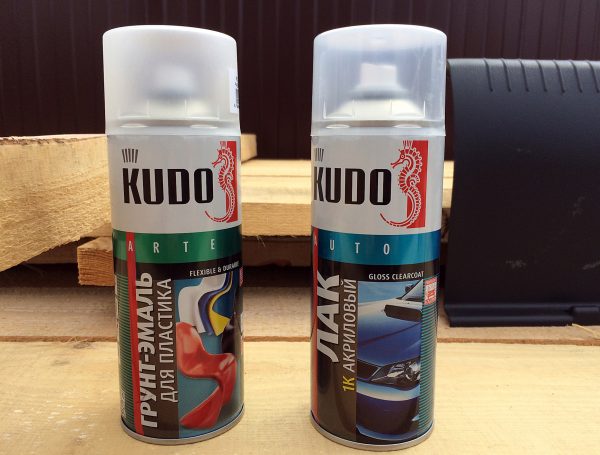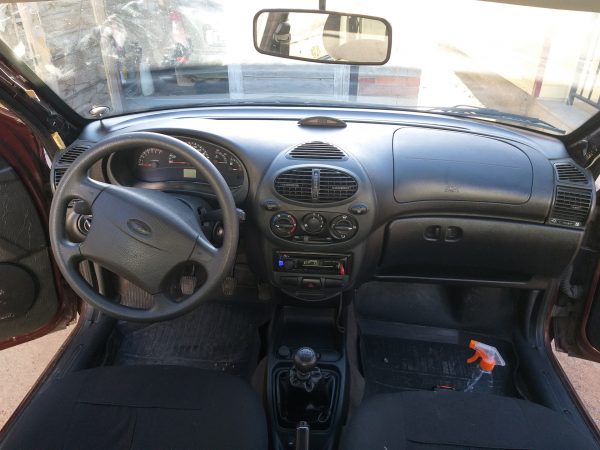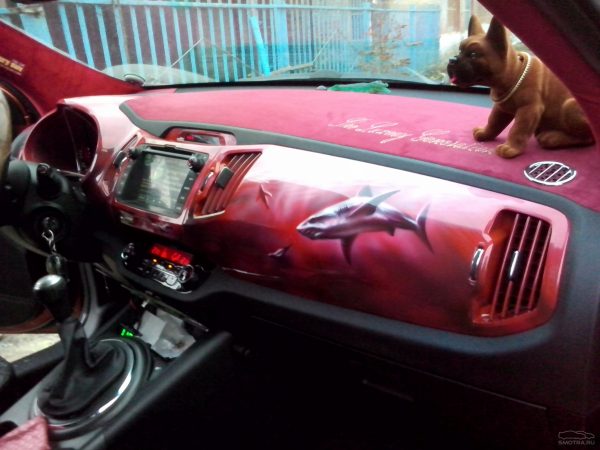The dashboard of a car often suffers from the appearance of small scratches, scuffs. The paintwork in this area undergoes regular mechanical stress, so it cannot always be kept in perfect condition.
- Torpedo restoration methods
- Necessary tools and accessories
- Preparation for restoration work
- Dismantling a torpedo
- Primed torpedoes
- Paint application
- Finish varnish
- Liquid rubber painting
- Liquid Vinyl Processing
- Painting domestic models
- Tips for painting a torpedo
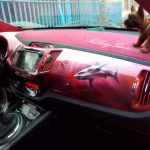
Special paint for the car dashboard will allow this element of the interior to return gloss and attractiveness. All manipulations, if desired, can be done with your own hands.
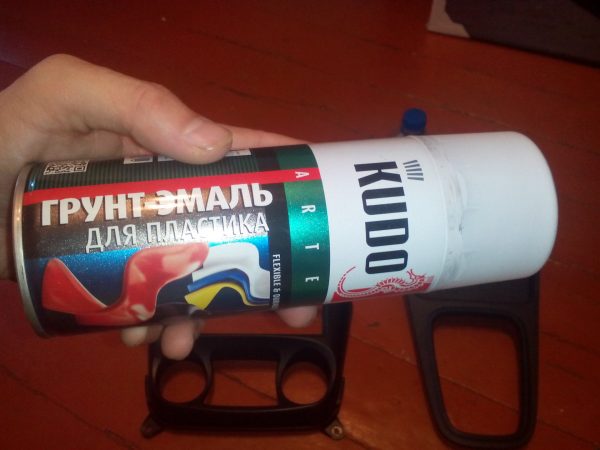
Torpedo restoration methods
To update a worn torpedo, you can use different techniques. The easiest way is to paint the instrument panel with specially selected enamel or rubber compound, and then varnish. This method will be the most inexpensive and fastest, however, it also carries with it certain difficulties. For example, after staining with a glossy composition, the torpedo will shine, which will distract the driver on the road. In addition, the surface of the torpedo is not absolutely rigid, so the finished coating may seem uneven, and you will need to apply it carefully.
Other methods of restoration of a torpedo are as follows:
- Vinyl Wrapping. On sale there are a variety of films made in a wide range of colors - glossy, matte, under the skin, carbon, etc. You can easily choose the material that is ideally suited to the interior of the car. The film is applied as a single surface, without joints and seams, has an attractive and stylish look. Such a coating will last for many years, since it is durable and unpretentious in care. The disadvantages of the film can be called the difficulty of gluing, as well as poor retention of the coating on some types of plastic.
- Skin lining, eco-leather. Such decoration will cost an order of magnitude more expensive, but will make the panel look luxurious. Usually, sheathing is carried out if there is some experience in such work. Otherwise, you should turn to professionals, since it is quite difficult to finish a torpedo with high quality leather.
- Flocking. The technique involves applying the flock to the prepared plastic surface. Material in the form of small fibers of a fabric is sprayed like paint, as a result of which the torpedo becomes as if covered with velvet or suede. This finish is long and very beautiful.
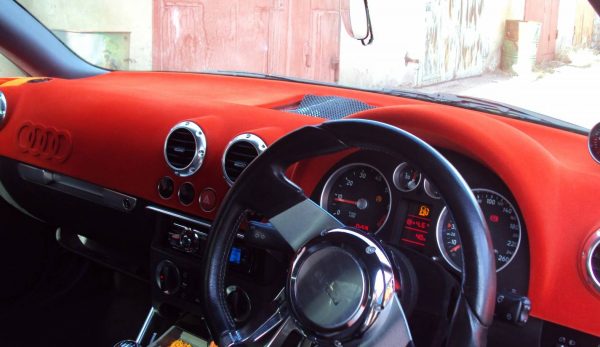
Necessary tools and accessories
From consumables for working with a torpedo you need to purchase:
- a degreaser to prepare the base for staining (alcohol, acetone, white spirit or another substance that does not dissolve plastic);
- detergent for cleaning torpedoes;
- emery paper for cleaning scratches, chips, scuffs;
- paint in a spray can or other form for painting a torpedo;
- plastic primer to enhance adhesion to the paint;
- varnish for finishing torpedoes (preferably two-component polyurethane);
- fine mesh for filtering paint and primer;
- putty for sealing cracks.
Instead of sandpaper, masters often use a grinding machine.This device is effective if you have sufficient experience on the equal footing of a large area. Since the torpedo is made of soft plastic and has a complex relief, it is better for a lay person to use ordinary sandpaper, so as not to damage the base. In extreme cases, you can use a grinder or drill with a nozzle for processing curved surfaces.
The tools that may be required to process a torpedo are as follows:
- brush or roller for priming;
- spray gun - manual or with compressor for uniform application of paint;
- a set of screwdrivers with various nozzles for dismantling and installing a torpedo;
- putty knife.
to contents ↑If you plan to use paint in spray cans, you can refuse the compressor and an airbrush, at the same time work is greatly simplified.
Preparation for restoration work
In garage conditions, painting is the most affordable method of updating a torpedo. To do all the work efficiently, you need to prepare the foundation in advance. Preparatory activities will be as follows:
- Panel cleaning. They erase dust, eliminate other impurities, washing the torpedo with any car detergent.
- Panel Drying. Allow the surface to dry well.
- Elimination of defects. Using sandpaper, grind scratches and other defects to smooth their edges. Act carefully so as not to damage the plastic. After blowing the base to remove polished particles. If there are large defects, they are coated with a special putty for plastic or epoxy.
- Degreasing. The torpedo is wiped with a degreaser or alcohol.
In the box or garage, additional lamps or other devices are installed that can provide a sufficient level of lighting and allow you to immediately detect and eliminate even minor defects. They also put heating devices if the work will be carried out in winter. This will help maintain a uniform temperature while drying the paint. Boxing itself is freed from debris and dirt.
to contents ↑Dismantling a torpedo
Before painting, it is better to remove the torpedo, but in difficult cases, you can leave it in place by pasting the surrounding areas with masking tape. The order of removal of the part will be as follows:
- disconnect the negative terminal of the battery;
- put the car on the handbrake;
- identify the location of self-tapping screws and other fasteners, carefully unscrew them so as not to damage (otherwise re-installing the torpedo will be difficult);
- disconnect the wires, remove the decorative elements, steering wheel;
- remove the plastic overlay;
- all plugs are carefully marked so that after they are returned to their place;
- a torpedo is taken out of the passenger compartment through the passenger door.
to contents ↑Beginners are advised to photograph each stage of the dismantling of the torpedo - so reassembling the product will be much easier. It is important to ensure that not a single latch is lost, otherwise you will have to look for them in automobile stores.
Primed torpedoes
Staining begins with priming the surface, which will enhance adhesion to the paintwork and make the plastic more smooth, even. It is best to use a primer in aerosol form, one bottle of which is enough for two or three layers. You can also apply soil from a conventional canister, cans using a short-nap roller. Each subsequent layer of material is performed only after the previous one has dried. Further, the surface is inspected, in the presence of sagging, additional grinding is carried out with the smallest emery cloth ("null").
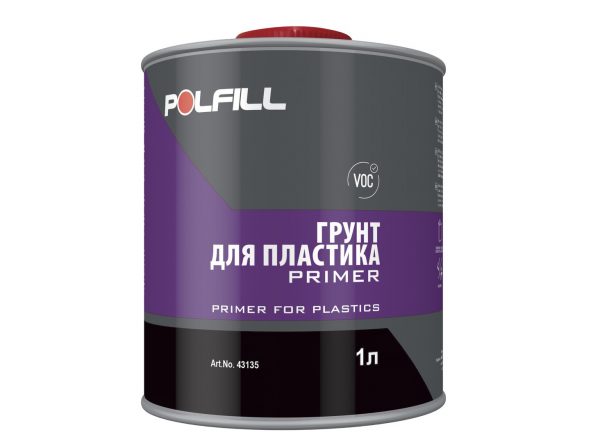
Paint application
If the work will be carried out using a spray gun, first set up the equipment. The air drawn in by the compressor must be dry, otherwise moisture will interfere with the adhesion of the paint to the plastic and reduce the life of the coating. Expensive spray guns are equipped with a water separator, so they allow you to work with greater efficiency.
The nozzle of the spray gun must be perfectly clean, otherwise particles of dust, dirt will fall into the paint. The dyeing material itself must be filtered through a filter (mesh) before filling into the capacity of the spray gun.For automated application of paint and varnish, dilute with a solvent to obtain a fairly liquid texture in proportions that correspond to the manufacturer's recommendations.
The torpedo is painted, holding the nozzle of the device at a distance of 15-20 cm from the surface. If you bring the sprayer closer, drips will form on the plastic, and if the nozzle is held too far, the adhesion to the paintwork will decrease. Layers are performed from left to right, stepping a little on the previous lane. The paint is applied in 2-4 layers with complete intermediate drying. Each time, drops and drips of paint are cleaned with sandpaper. They work in a similar way when painting torpedoes from a canister, which is held at 20-25 cm from the surface. Allow the dashboard to dry completely.
to contents ↑Finish varnish
On sale there are matte and glossy varnishes on a polyurethane basis, ideal for torpedo processing. It is advisable to choose the composition of the same brand as the paint. The varnish is applied in a thin layer, forming a thin coating. The second layer is performed immediately after drying of the first.
to contents ↑Liquid rubber painting
Rubber paint looks great on the dashboard of a car. It allows you to make a rough, pleasant to the touch coating, which does not give sun glare, is resistant to moisture, dries quickly. When applied, paint with rubber does not smell, does not form seams, joints and does not bubble. The disadvantages include the risk of scratching the surface during mechanical impact, but it can be eliminated by varnishing the dashboard in 2-3 layers. Rubber paint is applied from a spray can in 3 layers, allowing each to dry thoroughly. Typically, a single 400 ml bottle is enough to color the panel.
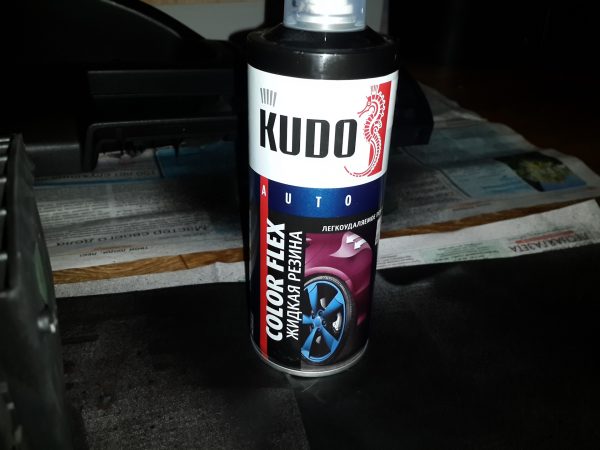
Liquid Vinyl Processing
Liquid vinyl, like rubber paint, is sold in spray cans and is successfully used to paint various parts of the car. Even a thin layer of vinyl protects the dashboard from damage, gives strength. The material is not afraid of ultraviolet radiation, frost, temperature changes. The procedure for applying vinyl is as follows:
- shake the can well with the product for a minute to make the contents homogeneous;
- spray the first layer, which will serve as a binder and should be quite thin;
- wait half an hour, then apply another layer;
- after some time, 2-3 additional layers of vinyl are successively performed, dried for at least 4 hours;
- during the drying period, dust is not allowed to come to the surface; contact with garbage is excluded in every possible way.
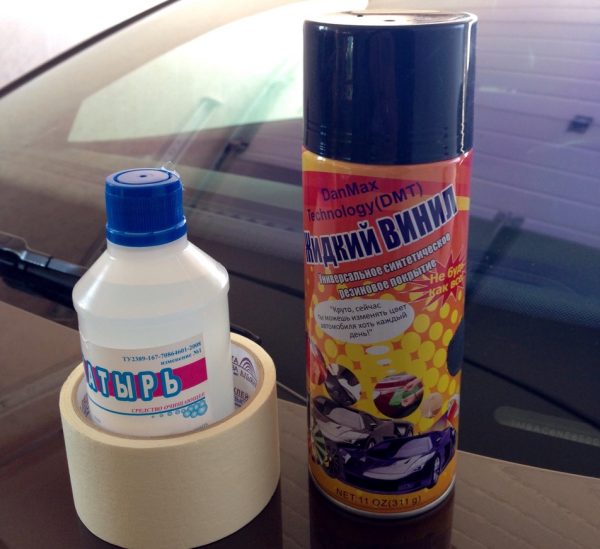
Painting domestic models
The coloring of the panels of domestic machines is carried out according to the same algorithm. The part is cleaned of dirt, dust, degreased, carefully processed with sandpaper. The surface is primed, the primer is allowed to dry, and then painted in several layers. Be sure to varnish the panel so that the quality of the finished paintwork is the highest. After complete drying put the item in its original place.
to contents ↑Tips for painting a torpedo
The selection of a suitable paint for a torpedo seems to be quite difficult for beginners. Saving on paintwork is not worth it, because a poor-quality coating can peel off or go blistering. When buying paint in cans, you should immediately buy a couple of packages so that the product does not end at the wrong time.
When choosing a shade, you need to take into account that it will subsequently be more difficult to paint a dark tone. Experts advise making the panel a little lighter than the interior trim - so the eyes will be less tired after a long ride. Do not make out the panel too brightly, because it will look defiant.
The use of special automotive paint will allow you to update an important element of the car with your own hands. With the exact observance of technology and accuracy, the torpedo will look stylish and modern without extra costs.

